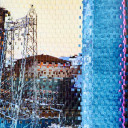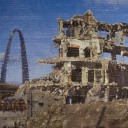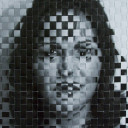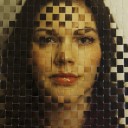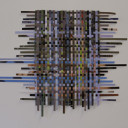What is your earliest memory of art?
I always recall very early on my mother weaving baskets. She took a class one year and I would watch her soak the strips of wood and then weave different sorts of baskets with various patterns and colors. She was always working on some kind of project and I would also see her sewing a lot, mainly for clothes for my sister and I or for our baby dolls.
Why did I become an artist?
I have always wanted to create; and I think photography excited me the most. Taking images and sometimes even forgetting about what I had shot and getting excited about what moments were captured.
Finish these sentences:
Photography is…. a framed moment, stripped out of its original context, that forever is frozen in time..
A Photograph is… a memory, a moment, paper and light, a chemical reaction, a piece of history, a story, a means of storing information, a souvenir.
You are on an island for one year with 4 other artists. Who are they? Dead or Alive!?
Dead: Hannah Wilke. Frida Khalo, Leonardo Da Vinci, Andy Warhol
Alive: Jeff Koons, Edward Burtnysky, Damien Hurst, Susan Sontag
How did you first begin weaving photos?
I began weaving photographs after years of experimenting with the actual medium. For years I have been cutting into the image to create collages and trying to create “images” that were more like art Objects rather than prints. I started to weave the image because I wanted to physically weave the information together and I liked the way the images became distorted and sort of imitated pixels.
What steps do you take when creating a new work?
I come across a place/person or idea of interest and photograph either with digital or film and sometimes digitally enhance or alter the image even before distorting it after printing. After I print the images I slice them into strips (usually 1/4″) and weave one into the other (either the same image, a similar image or entirely different images) and even though the process of weaving is tedious and also repetitive, I still can creatively change how the image will look and can control how distorted the image will be by omitting certain parts of the image or moving the strips around.
Handmade distortion plays a large role in work. Can you expand on this theme?
Handmade distortion is Very important to me, I want to create images that go against the means of reproduction. I have always enjoyed the process of film and when taking and printing photographs digitally, I lose that sense of process but when I weave the images printing is only one of the first steps. I like to create art using my hands and putting my fingerprints on the work to create an actual art object instead of a two dimensional, reproducible print.
What advice would you give other artists?
The advice I would give other artist would be to Always Experiment and always put in time. Some of my favorite images come from a mistake or mis step in the process and it makes me think about the image differently and opens up an entirely new way of looking at the image. I like to put in the time and actually build up the image, more like a textile work or a sculpture, and I think about photographs in that way rather than the work being a digitally rendered image.
In five years my art will…
Get bigger and bigger in scale. I recently made a woven piece 6 feet X 8 feet but plan on making images much larger. In five years hopefully I will have a larger studio space to work in!
Share something that has inspired you recently:
I recently visited New Orleans and went to NOMA sculpture garden. Usually I view art in some kind of museum or gallery, white walls, wood floors… but it was inspiring to see art mixed in with natural elements. I was most drawn to the sculptures that were more contemporary and bright, like Robert Indiana’s LOVE or Roy Lichtenstein’s Five Brushstrokes. The tension from the soft willowy trees against the hard geometrical edges create an interesting juxtaposition.
What is an issue facing our local or global community, and how might we fix it?
Photography is not what it once was and now it is so easy to snap an image and we are constantly taking images, so photography is a tough art form to justify. I think social media has changed how we view photography and now we are bombarded with images everyday through websites and apps such as Instagram and Facebook. I don’t think there is necessarily a way to “fix” the issue I just think photographers need to evolve with the technology and create work that is more than just a few clicks away.
Any final thoughts, shout outs, interview nominations, or memes?
Photography has always interested me more than other forms of art because it is not just a form of expression but also a technology. Photography was not even considered an art form until the 1970s which is rather recent compared to other mediums. I think that the entire history is always changing because the technology is constantly changing…from glass plates and silver gelatin, to images that are not even chemical reactions with light but formed from a digital formula not even tangible in real space but stored on some kind of microchip. There are so many different kinds of photographers and ways to create and use images, I really look forward to seeing what photography will be even just 10 years from now….

